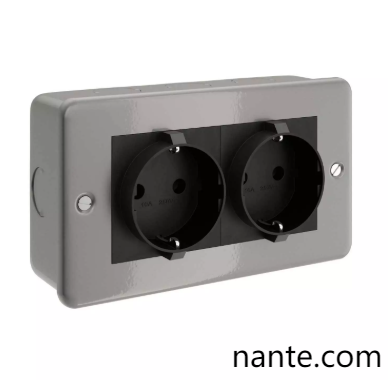As global industries increasingly push into rugged terrains and climate-vulnerable regions—from Arctic research stations to desert solar farms—the need for resilient infrastructure has never been more urgent. Recent extreme weather events, intensified by climate change, have exposed vulnerabilities in traditional power systems, particularly in isolated areas. Amid these challenges, the Electrical Socket Box emerges as a critical innovation, enabling industries to maintain operations in environments where reliability is non-negotiable.
The rise of decentralized workforces and off-grid projects—think disaster relief camps or remote telecommunication hubs—has reshaped expectations for power distribution. Modern operations demand solutions that withstand monsoons, sandstorms, and sub-zero temperatures while ensuring uninterrupted energy flow. Companies like Nante recognize this imperative, designing systems that integrate military-grade durability with user-friendly adaptability. Their products employ advanced sealing technologies and corrosion-resistant materials, addressing pain points highlighted by recent floods in Southeast Asia and wildfires in drought-stricken regions.
Scalability is another cornerstone of effective remote power management. Temporary field hospitals deployed during health crises or pop-up mining sites require modular setups that can expand or reconfigure overnight. Unlike rigid traditional systems, contemporary designs prioritize plug-and-play simplicity, reducing setup time by up to 70%—a game-changer for teams racing against logistical deadlines. This flexibility aligns with the growing trend of “mobile-first” infrastructure, where rapid deployment determines project viability.
Energy efficiency remains central to sustainable growth in harsh environments. With global attention on decarbonization, remote installations now balance performance with eco-consciousness. Smart power management technologies minimize waste without compromising output—essential for solar-powered agricultural stations in Africa or wind-monitoring facilities in coastal zones. Nante’s solutions exemplify this balance, helping operators reduce their carbon footprint while maintaining 24/7 functionality.
The intersection of resilience and innovation extends to material science. Cutting-edge protective coatings inspired by aerospace engineering shield components from moisture ingress, while heat-dissipating designs prevent overheating in arid climates. Such advancements mirror the durability seen in specialized industrial packaging materials, though tailored explicitly for electrical systems.
As industries navigate supply chain uncertainties and environmental volatility, investing in future-proof power infrastructure becomes strategic. Whether supporting AI-driven weather monitoring in the Pacific or extending renewable energy grids into mountainous regions, reliable distribution hubs form the backbone of progress.
For organizations prioritizing operational continuity in Earth’s most demanding corners, Nante offers a suite of engineered solutions that marry ruggedness with intelligence. Discover how their expertise transforms remote challenges into opportunities at nante.com/product —where innovation powers tomorrow’s frontiers.
